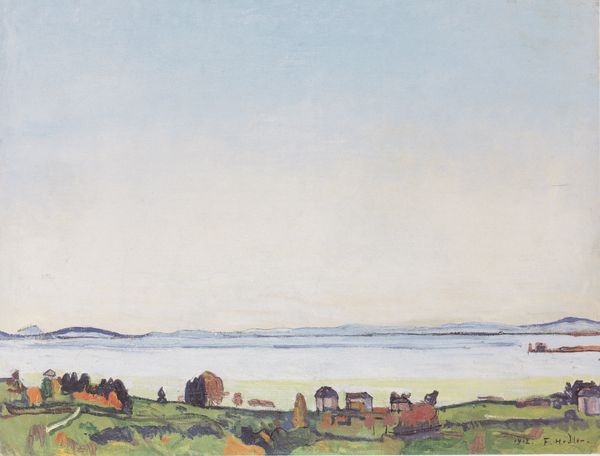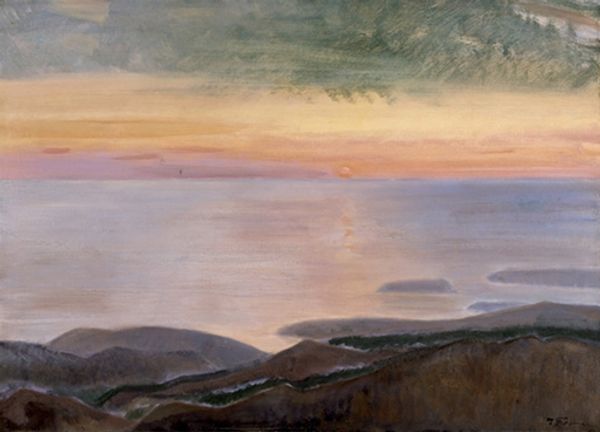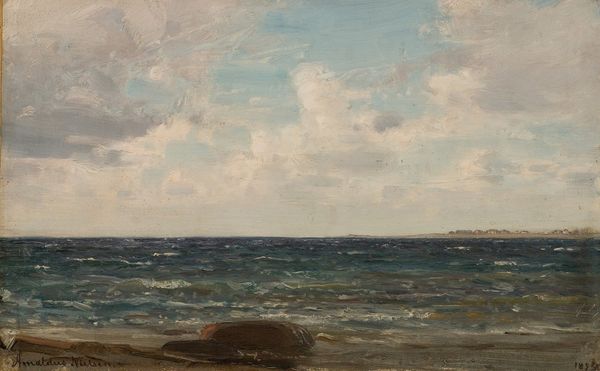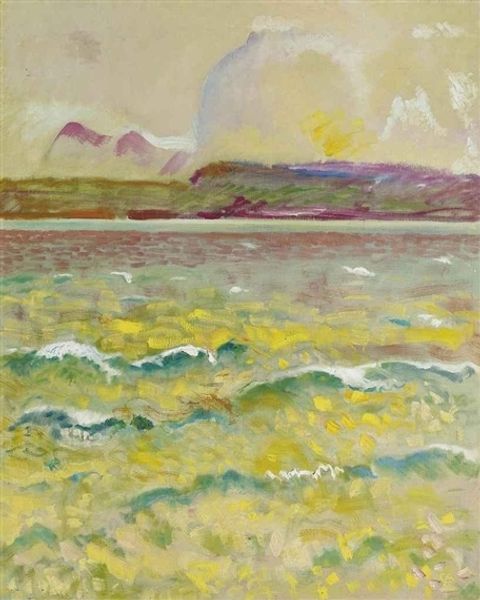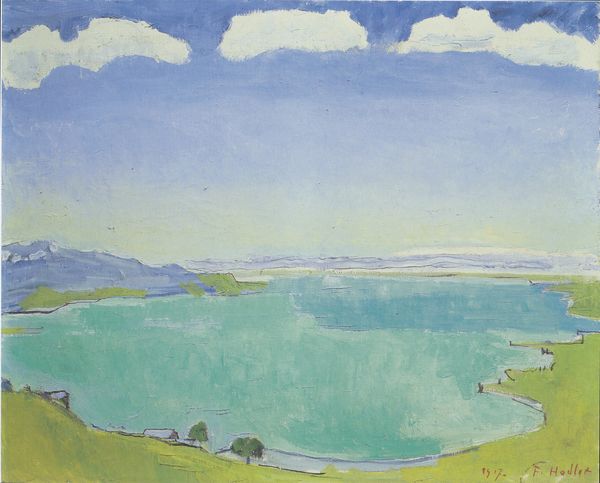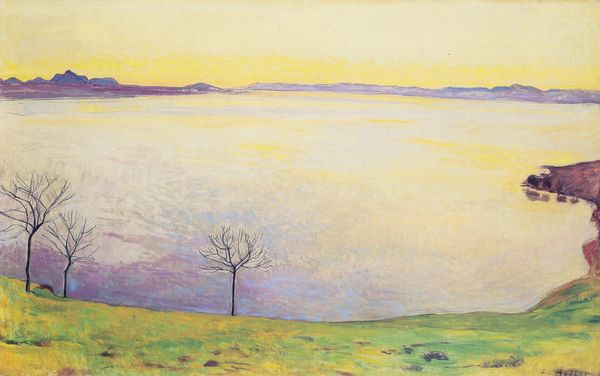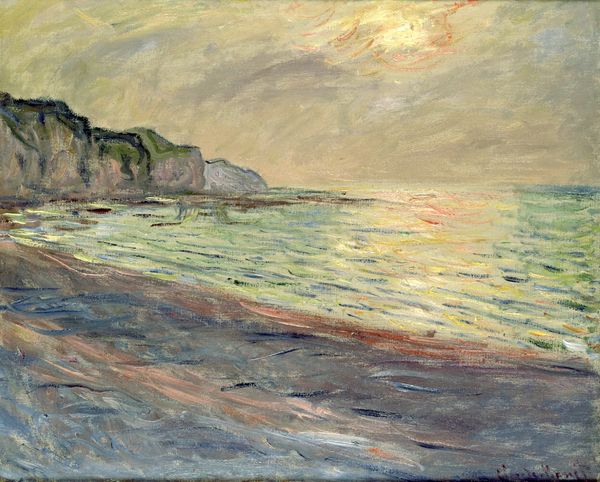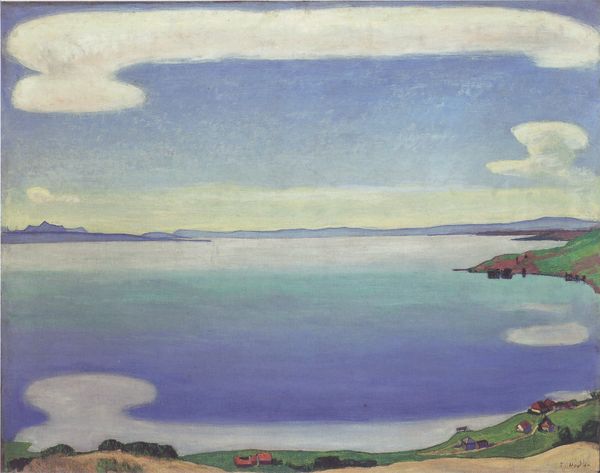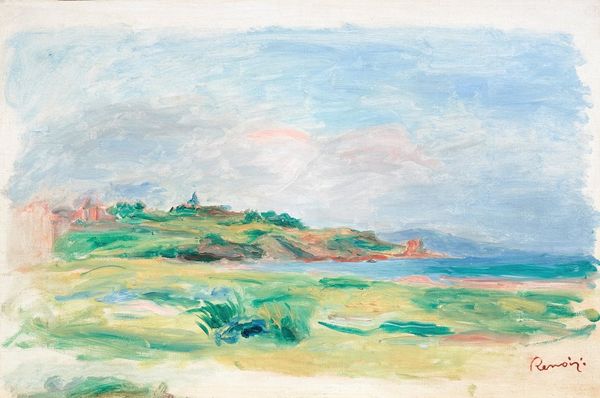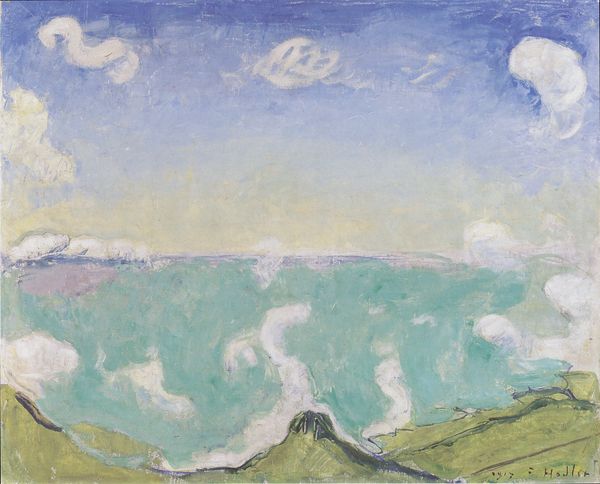
Dimensions: 44.5 x 71 cm
Copyright: Public domain
Curator: Let's discuss Ferdinand Hodler's "Landscape with Rhythm," painted in 1908. It resides in a private collection, and while modest in size, it resonates with echoes of the artistic and societal conditions of its time. What are your immediate thoughts? Editor: There's something intensely serene about it. Those horizontal bands of color– the soft blue sky, the darker hills, that almost luminous green water– it’s like a visual lullaby. But it also feels a bit…rehearsed? Curator: That sense of rehearsal you pick up on is linked to Hodler's theory of Parallelism, influencing artists. It’s evident in the way he orchestrates repetition and symmetry to achieve harmony and convey deeper universal meanings. Consider, for example, the almost rhythmic spacing of those clouds across the sky. Editor: Yes! It's like the landscape is built from a set of modular units, everything echoing and answering something else. Hodler's definitely going for order, but there is an unnerving tension in that water, a shimmering light on the acrylic that feels artificial, deliberately stylized. Was he making a point about industrial order imposing itself on nature? Curator: Exactly. Hodler's paintings emerged during a time of rapid industrialization and social upheaval in Switzerland. These paintings weren’t just pretty pictures of the lake and sky, they reflected those concerns. He used paint thickly on canvas as a way to elevate traditional craft into a higher art, similar to his contemporaries, such as Klimt. Editor: The surface is alive, it vibrates with these palpable textures, but always structured to project emotional control. Even those tiny clouds seem marshalled into formation. For me, this landscape becomes a subtle meditation on imposed order—both beautiful and a little unsettling. I appreciate the rough brush stroke and repetitive quality here that add so much dimension to the composition. Curator: And perhaps that tension is what makes it so compelling still. Hodler delivers aesthetic delight alongside an acknowledgement of an unsettling transformation—so typical for artwork produced in an era undergoing radical transformations and technological progress. Editor: So, it seems the artist presents a calm and composed image and suggests the complexity and emotional cost of maintaining order during turbulent times. Well, that’s an enlightening way to think about landscape art.
Comments
No comments
Be the first to comment and join the conversation on the ultimate creative platform.

